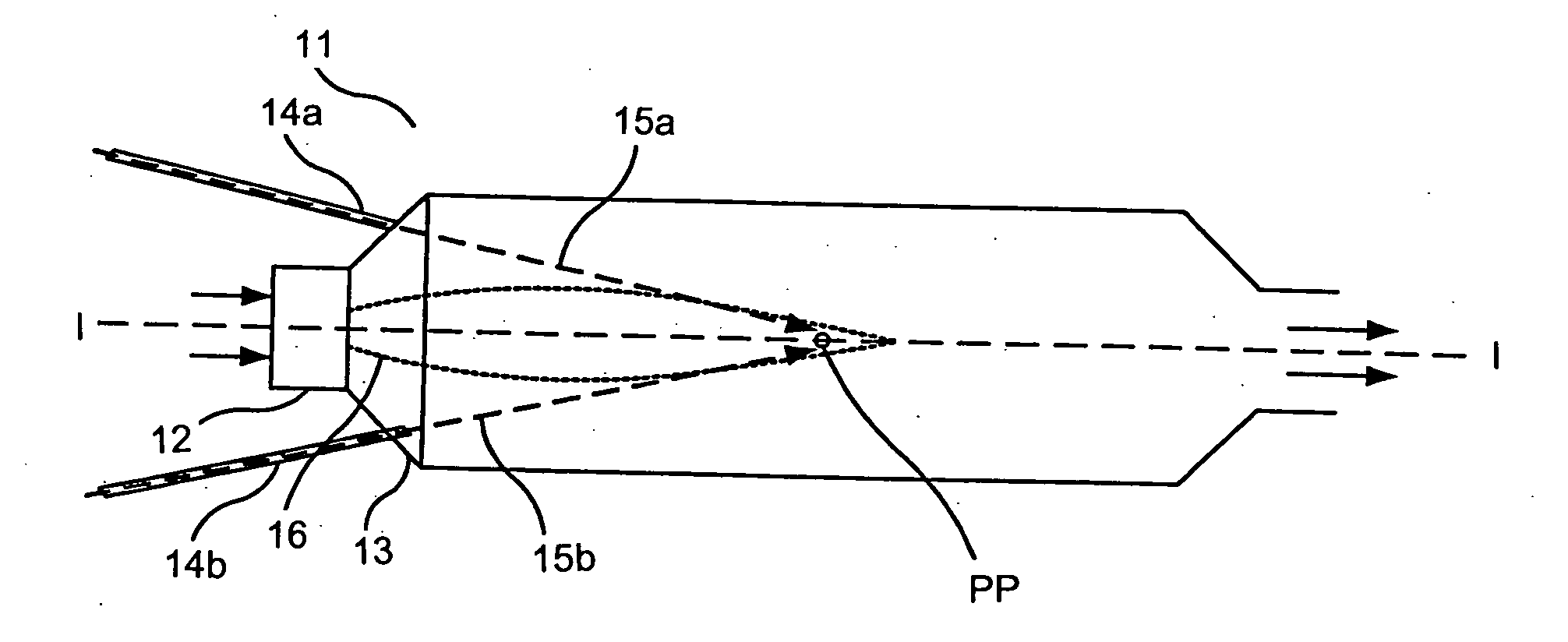Lancing of oxygen
a technology of oxygen and lancing, which is applied in the direction of indirect carbon-dioxide mitigation, combustion types, lighting and heating apparatus, etc., can solve the problems of difficult to achieve, low efficiency, and balanced stoichiometric deficit, and achieve the effect of decreasing the amount of nox
- Summary
- Abstract
- Description
- Claims
- Application Information
AI Technical Summary
Benefits of technology
Problems solved by technology
Method used
Image
Examples
Embodiment Construction
[0020]In FIG. 1, a rotating industrial furnace is depicted. The furnace 1 is heated by the use of a conventional burner 2, using natural gas 7 as the fuel and air 8 as the oxidant. However, it should be understood that the fuel can be any other suitable fuel, such as various liquid or gaseous hydrocarbons. The burner 2 has an associated flame 6, and is mounted in a furnace door 3, which is arranged at a first end of the furnace 1. Through an opening at the other end of the furnace 1 from burner 2, combustion products 9 exit from the furnace.
[0021]The inside diameter of the furnace 1 can, by way of example, be 3.5 m, and it can be about 12 m in length. It can be used for melting out metallic aluminum from so-called dross, which consists of a mixture of aluminum and aluminum oxide. Because of the size of the furnace 1, it must be rotated in order to be able to maintain a sufficiently uniform temperature distribution inside the volume of the furnace. It should be noted, however, that t...
PUM
 Login to View More
Login to View More Abstract
Description
Claims
Application Information
 Login to View More
Login to View More - R&D
- Intellectual Property
- Life Sciences
- Materials
- Tech Scout
- Unparalleled Data Quality
- Higher Quality Content
- 60% Fewer Hallucinations
Browse by: Latest US Patents, China's latest patents, Technical Efficacy Thesaurus, Application Domain, Technology Topic, Popular Technical Reports.
© 2025 PatSnap. All rights reserved.Legal|Privacy policy|Modern Slavery Act Transparency Statement|Sitemap|About US| Contact US: help@patsnap.com


